Todays POTD,
After shift this morning we walked the ruffians then I went to work on the tow vehicle for the upcoming "redeye express". I wanted to change out the two fuel filters and Allison tranny filter as well as a thorough general inspection. The rig will be running for a solid 16-18 hours hauling.
Popped off the passengers side inner fender to have full access to the OEM fuel filter. I used to work from the topside but my back always complained so now its just easier to work from a stool through the fender. The second filter was added when the truck was brand new. I had done extensive research prior to purchasing the GMC and found the early Duramax diesels had injector issues related to weak OEM filters, mostly found on 2000-2002 models. GM has addressed the issue but at 24K psi injection system on the LLY, any debris will kill the ceramic seats so I installed a secondary filter. Two options for install are pre OEM or post OEM, I opted for the first. This means the fuel is pre filtered prior to the OEM filter. I normally service both, then after 12K miles, I'll service the pre OEM then both after another 24K miles and so on. I have never had fuel delivery issues so the program works. I only use this rig for towing so it gets a workout. The Allison gets a filter (spin on/off) every 30K miles and a tranny service every 45K miles. Heat is your enemy and summer towing in Arizona makes it worse.
The goods:
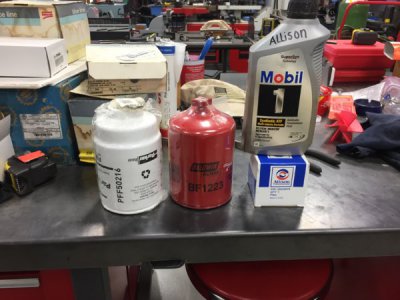
Inner fender removed provides easy access to the OEM filter. The water sensor screws on the bottom of filter.
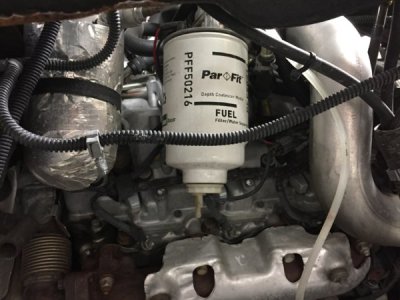
Prepping the new filter with a new O-ring on the water sensor and larger O-ring on the mating surface to the priming housing.
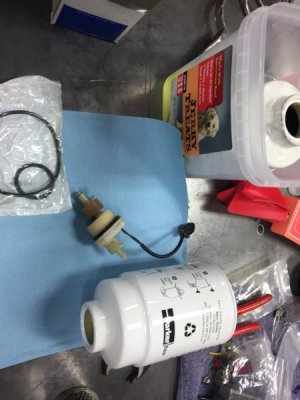
I changed out the priming bleeder with a brass T-valve with a line to catch the primed fuel. GM feels it's ok to **** diesel all over the exhaust manifold when priming.
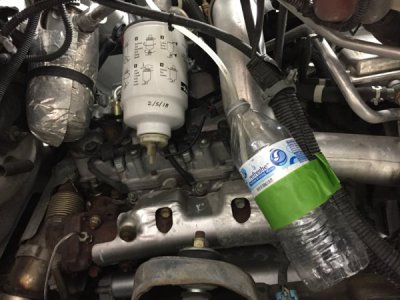
Here you can see the T valve commonly found under most kitchen sinks that provide a water supply to ice makers.
This really keeps things clean and safe. Pump plunger until you feel resistance, then open valve and watch for a solid stream of fuel through the opaque line. Rinse and repeat until all air is out of system.
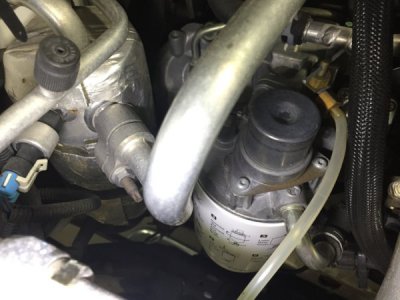
Heres the pre OEM Baldwin 2 micron filter. It bolts where a secondary compressor would mount. Easy access up front.
Priming takes twice as long as this filter is bigger.
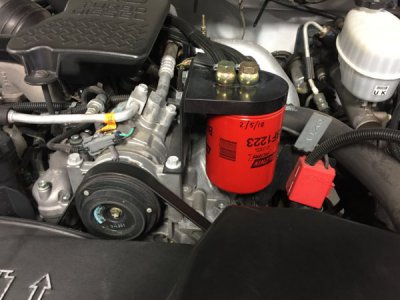
All primed! and ready to fire up.
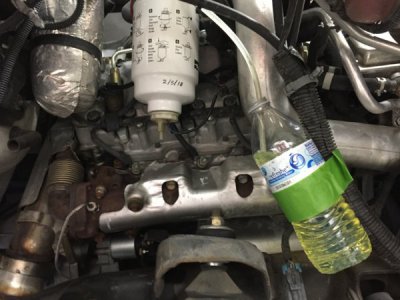
If the rig shuts down, then make sure the filters are tight. Vacuum will draw air into the system resulting in stalling. Also check the bleeder or in this case the ensure the T-valve is closed.
Button up the inner fender, let idle for 10 or until warmed up and shut down to change the Allison filter. I pre-fill the filter eliminate having to top off from the dip stick. Don't forget to clean the doughnut magnet and reinstall inside the new filter.
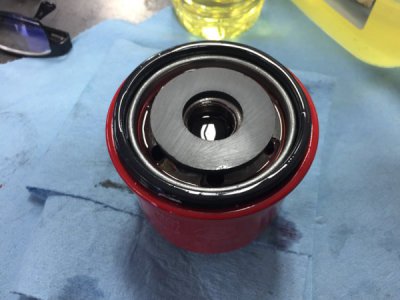
fire up and check for leaks.
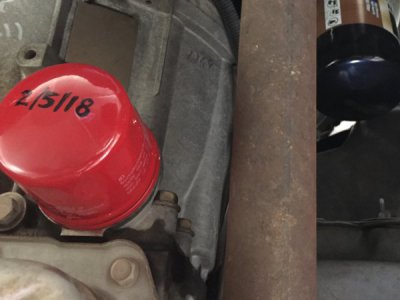
Everything looked good and a test drive to fill up with diesel for an early departure on Thursday. I decided to head out at 02:00 to arrive at Acra around 10:00 am. They go to lunch at noon so I want to be heading back with the new machine without delay. With the trailer done last Saturday there was only one more thing to prep for the trip, so I package up the damaged lathe.
I draped moving quilts over both ends of the machine and three more down the middle over the original shrink wrapping. Using large papper binders to keep the quilts tucked in until wrapped, Mrs. firestopper helped me wrap the hell out of the said quilts to keep them in place.
This will prevent any further damage to the paint.
Before the quilts:
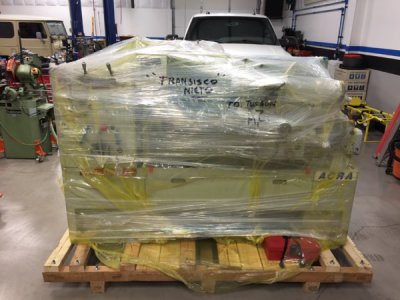
After the quilts and shrink wrapped (backside).
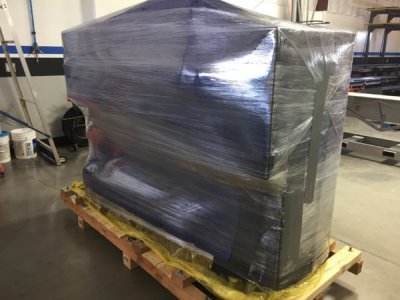
Front side.
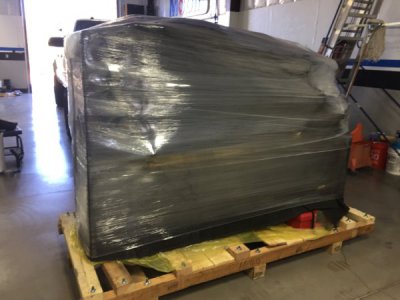
Tailstock end.
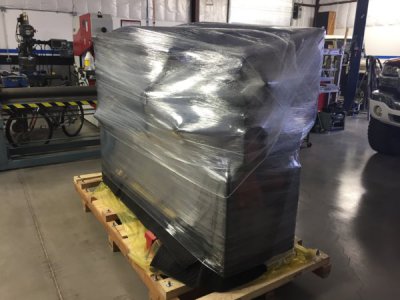
The quilts where folded much like you would wrap a box with 45º corners keeping it smooth and from bunching up. Plenty of corner protection and elsewhere.
And finally wrapped in a tarp and secured with nylon banding straps. Same care was taken keeping the corners tucked and facing backward keeping the wind from getting under the folds at highway speed.
Backside.
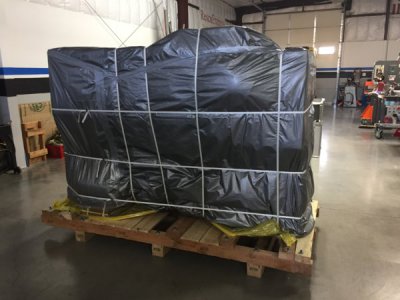
Frontside.
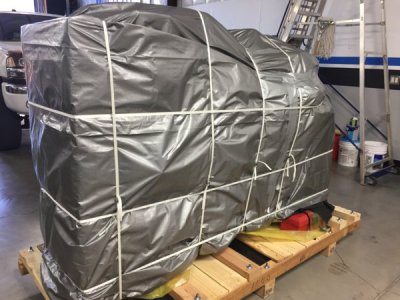
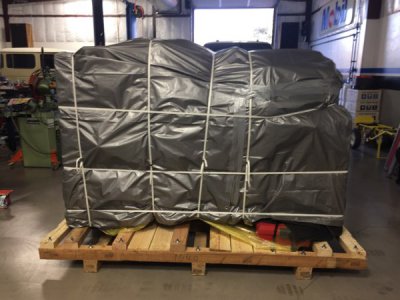
Tailstock end.
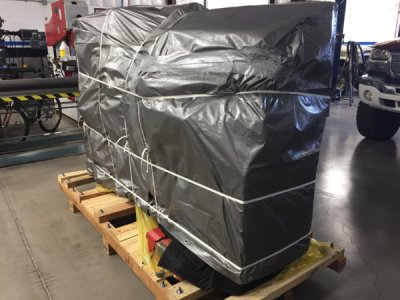
I will be packaging the replacement the same way. BTW, every bolt on the pallet where finger loose, I'm taking a 7/8" and 3/4" wrenches to ensure the new/replacement machine's pallet is tight. I suspect the wood might have dried out/shrunk since they built the pallet. I cant imagine why else they where so loose. Wednesday, The machine will be loaded as well as spare tires, necessary tools, fire extinguisher,extra tarps, shrink wrap, duck tape and floor jack. Better to have it and not need it, than need it and not have it....Back on shift tomorrow.
A full day with no real fun shop work.
Good night,
Paco
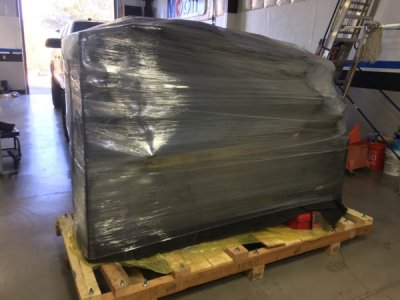
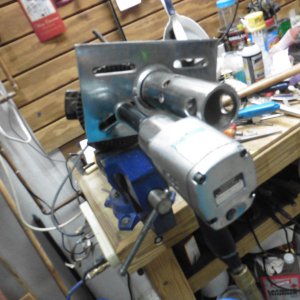
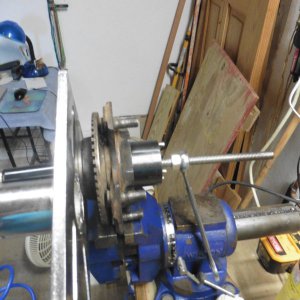
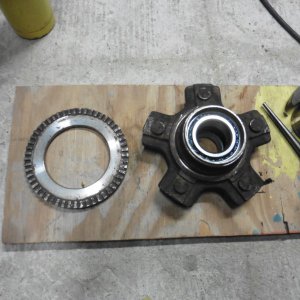
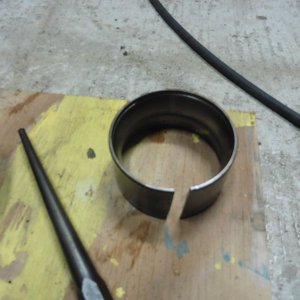
























 .
.